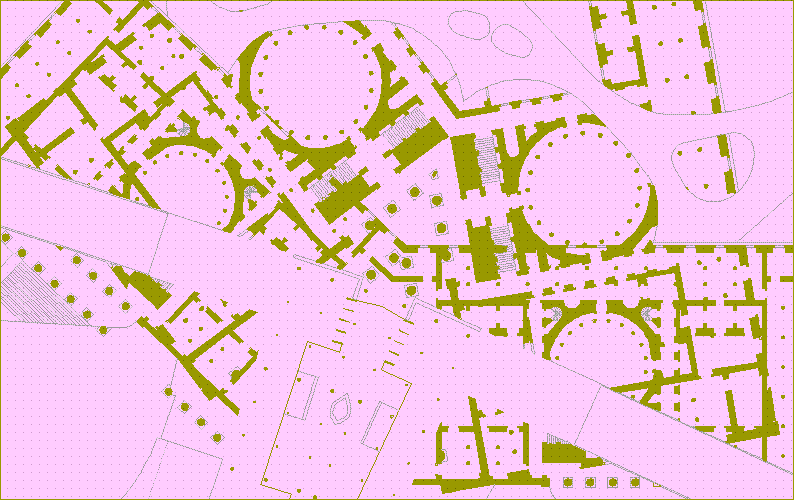
From: Stephen Lauf
To: design-l@lists.psu.edu
Subject: human conditions to conjure with
Date: 2002.08.22 13:05
In the 23rd section of Hannah Arendt's The Human Condition entitled "The Permanence of the World and the Work of Art" the last sentence of the first paragraph reads:
"Even if the historical origin of art were of an exclusively religious or mythological character, the fact is that art has survived gloriously it severance from religion, magic, and myth."
From my experience over the last half dozen years, the so-called severance of art from religion, magic, and myth is not at all a complete and absolute phenomenon. In fact, that of my art which is the most valuable is indeed engendered via religion, magic, and myth. For example, EPICENTRAL first came into being 16 August 2001 and has evolved into a completely unprecedented documentation of the first 21st century legend of St. Helena. EPICENTRAL's first book is entitled "Calendrical Coincidence" and calendrical coincidences have abounded aplenty during EPICENTRAL's first year, which fittingly ended 15 August 2002, thus coinciding with the death of Stephen I of Hungary (the premier Ezeri Mester?) in 1038. [Although the feast of St. Stephen of Hungary is celebrated variously on 16 August, 20 August, or 2 September, the date of his death is (consistently) 15 August 1038. The date of Stephen's crowning by Emperor Otto III is recorded either Christmas Day 1000 or New Years Day 1001, and likely some other dates as well. It is worth noting that another Otto and Stephen, a.k.a. the brothers metabolic, were generating another type of 'crowning' of another Ezeri Mester(?) via schizophrenia + architectures during all of 1999 at www.quondam.com.]
In doing initial prep-work for SPIELZEITGEIST MIT EZERI MESTER, I started looking through my notes from roughly 1994 to the present to begin compiling 1000 distinct ideas. By the time I reached 15 August 1999 at least 119 applicable ideas were noted. The notes from 15 August 1999 through to 22 August 1999 gave me great pause, however. Without copying the notes here in their entirety, a select group of excerpts will sufficiently demonstrate (some artistic magic?).
15 August 1999
Ottopia done - free in September
I am pleased to write that I have today completed Ottopia's 440 pages. ...this is the first time one of my overreaching goals has been accomplished. ...Ichnographia Ottopia comes to represent architectures of schizophrenic spontaneity. ... Perhaps I can turn Quondam into architectures of schizophrenic spontaneity.
18 August 1999
www.quondam.com/first
I have come up with a scheme for Quondam's first ten years of the first millennium... [2002.08.22: This scheme never developed beyond a few notes, but the date of the idea is an interesting coincidence in that Helena Augusta, whose feast as a saint is celebrated 18 August, is major subject matter for Quondam within the third millennium thus far.]
18-19 August 1999
the rest of 1999
...I'd also like to add a little more provocative text to s+a, and perhaps that really isn't going to be all that difficult if I actually begin working on reenactment architectures, and seeing how the Izmit earthquake [which occurred 17-18 August 1999; Izmit is today's ancient Nicomedia] is an uncanny reenactment of Diocletian's Nicomedia, my case for reenactment in the future of architecture and urbanism is now even stronger.
18-19 August 1999
a list of other ideas
5. shell formations as evocative of the new "animate" architectures.
20 August 1999
new use of frames
...Various texts can (accidentally) become aligned with various images and vice versa, and overall it will all depend upon what choices the visitor makes.
21 August 1999
inside density - virtual
This is when I began writing the first final draft of "Inside the Density of G.B. Piranesi's Ichnographia Campi Martii."
21-22 August 1999
the rest of s+a ...a kind of last days of the millennium manifesto.
1. speaking on the telephone with an old man who has a German accent about restoring an obelisk in Olney was not the type of conversation I expected.
5. Has the Tacony Creek Valley always been a valley of death?
8. Is Quondam approximately 3 to 5 years ahead of its time?
11. The intersection of Rising Sun and Adams Avenues is so notorious for its rush hour gridlock that a Korean-American businessman was targeted and assassinated in his car while he was stuck in traffic.
12. There is serious speculation that the intersection of Rising Sun Avenue and Tabor Road was once a site where [quondam] local Native Americans gathered on the summer solstice.
14. While once on vacation as a child I often played miniature golf within full sight of the Iron Curtain.
22 August 1999
(new) Quondam - a "playground"
In reviewing the first chapter of Homo Ludens for "Inside the Density...", there are passages that relate well to the nature of virtual place, and I now want to incorporate the play concept onto Quondam's philosophy. The notion of play is part of the virtual-web-digital ethos already (ie, role playing), but it hasn't (so far as I know) been applied to the notion of virtual buildings or virtual institutions (like a museum). I'm thinking that play fits perfectly with what I want to do with the collection.
On a much broader level, it occurred to me that Quondam should begin to shed its museum metaphor, ie, Quondam should henceforth be something that a real museum isn't or couldn't be. There is a long footnote re: muse in Homo Ludens that is very inspiring as to what a virtual museum could be. . . .
|